- News
- Reviews
- Bikes
- Accessories
- Accessories - misc
- Computer mounts
- Bags
- Bar ends
- Bike bags & cases
- Bottle cages
- Bottles
- Cameras
- Car racks
- Child seats
- Computers
- Glasses
- GPS units
- Helmets
- Lights - front
- Lights - rear
- Lights - sets
- Locks
- Mirrors
- Mudguards
- Racks
- Pumps & CO2 inflators
- Puncture kits
- Reflectives
- Smart watches
- Stands and racks
- Trailers
- Clothing
- Components
- Bar tape & grips
- Bottom brackets
- Brake & gear cables
- Brake & STI levers
- Brake pads & spares
- Brakes
- Cassettes & freewheels
- Chains
- Chainsets & chainrings
- Derailleurs - front
- Derailleurs - rear
- Forks
- Gear levers & shifters
- Groupsets
- Handlebars & extensions
- Headsets
- Hubs
- Inner tubes
- Pedals
- Quick releases & skewers
- Saddles
- Seatposts
- Stems
- Wheels
- Tyres
- Health, fitness and nutrition
- Tools and workshop
- Miscellaneous
- Cross country mountain bikes
- Tubeless valves
- Buyers Guides
- Features
- Forum
- Recommends
- Podcast
review
£3,174.99
VERDICT:
A lovely cyclocross bike with a light weight and a soft character, best-suited to those with finesse
Weight:
7,484g
Contact:
www.2pure.co.uk
At road.cc every product is thoroughly tested for as long as it takes to get a proper insight into how well it works. Our reviewers are experienced cyclists that we trust to be objective. While we strive to ensure that opinions expressed are backed up by facts, reviews are by their nature an informed opinion, not a definitive verdict. We don't intentionally try to break anything (except locks) but we do try to look for weak points in any design. The overall score is not just an average of the other scores: it reflects both a product's function and value – with value determined by how a product compares with items of similar spec, quality, and price.
What the road.cc scores meanGood scores are more common than bad, because fortunately good products are more common than bad.
- Exceptional
- Excellent
- Very Good
- Good
- Quite good
- Average
- Not so good
- Poor
- Bad
- Appalling
The Ibis Hakkalügi is a lightweight cyclocross bike that's a real joy to ride. It's best suited to those who like to ride with a bit of finesse rather than those who like to muscle through regardless.
Ibis may have passed you by because, although they've had a road bike in their company quiver almost since their inception 30 odd years ago, they're best known as a maker of mountain bike frames.
Started in the first breath of the 1980s by Scot Nicol in northern California, Ibis gained some reputation in the years following amongst the off-roady types for producing quality frames. Both their steel Mojo and the Bow-Ti suspension bike that used the natural flexing qualities of its titanium tubes for its bounce became cult classics. The Hakkalügi here is their cyclocross bike and the carbon reincarnation of the steel cross frame that appeared at the end of the last century.
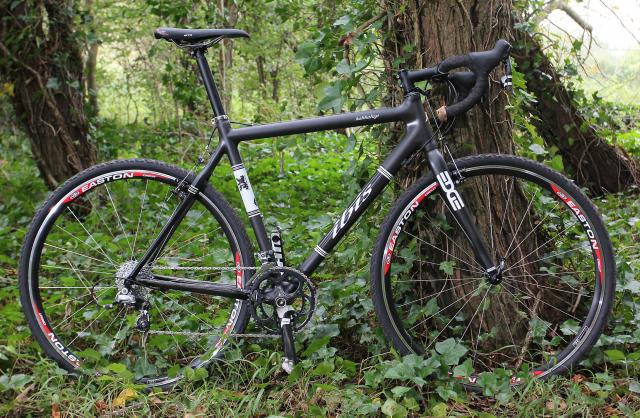
The Hakkalügi is available as a frame and fork combo (£1,549.99) or as a full bike with either a Shimano Ultegra or the SRAM Force based build like the one on test here. Let's get the component choice out the way first. The Hakkalügi is the sort of bike that's probably going to appeal as much to riders who want to build it up with their favoured bits as to those who want to jump right in and buy the whole shebang.
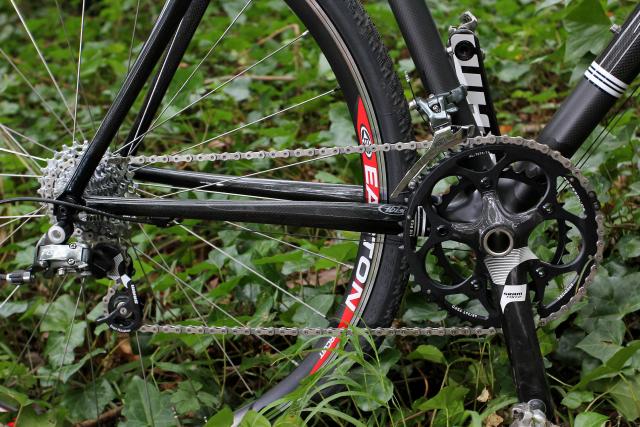
The SRAM drivetrain works with its usual plasticky efficiency, the 48/34T chainset linked up to the 11-28T 10-speed cassette proving a good spread for both the race course and venturing further and lumpier afield. Particular politeness has to be shown to the front mech when changing down into the smaller ring, especially when under muddy load to avoid any embarrassing takkata-takkata-takkata-takkata shift refusals or, even worse, those shameful Schlecky moments.
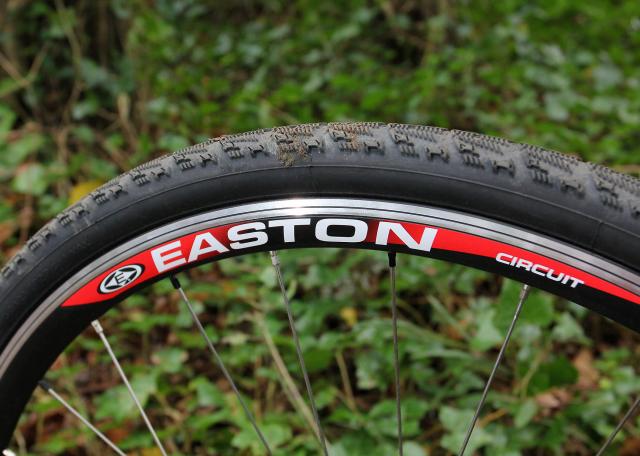
The Easton Circuit wheelset is an interesting pick, especially the front wheel with its 24 radial spokes. That's a curious choice on a bike designed for the rufty-tufty. That said, it stayed true for the duration of the test which is more than can be said of the 28 spoked rear. Laced up radial non-driveside and 2 cross by the sprockets, it started to show some serious rim meandering after not too long at all. The semi-deep section 28mm rims are just deep enough to cut through the mud and also just thick enough to catch the wind with handlebar twitching hilarity across a gusty football field. Alternating black and silver spokes on the rear are a pretty touch though.
The Michelin Cyclocross Jet tyres are an indication that the bike was designed in dusty Cali-forn-iay. You might want to swap those for something manlier when the weather gets more traditionally cyclo-cross. They're actually wider and comfier than their stated 30mm width would suggest, and they're more capable in the dry than their tread sparsity would imply. They're perfectly fine for road and towpath tootling if you want to make the frame cry a little bit inside.

Stopping is via the TRP Euro X cantilever brakes, a racers' favourite marking the Hakkalügi out as a 'proper' cross bike with none of this disc nonsense, but fitted with the new easier adjustable pads that makes keeping the things working efficiently considerably less frustrating.

Ibis supply the alloy seatpost, stem and bars and there are no complaints there as it all works perfectly fine. The inline seatpost possibly nods towards the bike's mountain bike heritage but the two-bolt clamping system makes it a doddle to adjust the WTB Shadow V saddle clamped in there. The perch comes with a centre line recess parting proud cushions in the rear, making the saddle feel a little bit pointy on the sit bones but not necessarily uncomfortable, as with all saddles, your cheekage may vary.
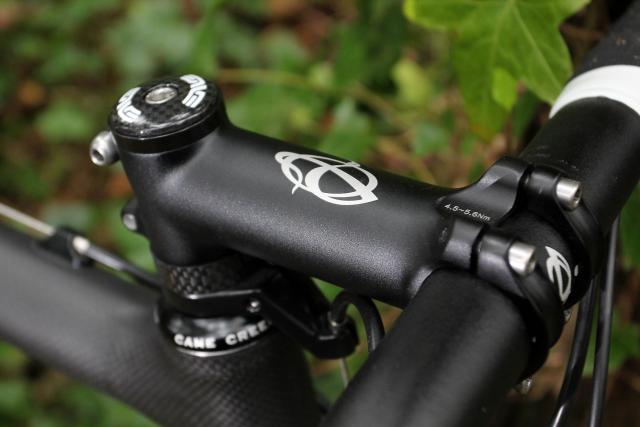
The oversize Ibis stem sits atop a Cane Creek IS-3i headset and does its job of keeping the bars the required distance away as well as any other stem. The Ibis Flat Top bars are, as their name suggests, flattened along the tops for palmy comfort and, at 44cm wide centre-to-centre and a constant radius shallow bend, they give handfuls of confident control.
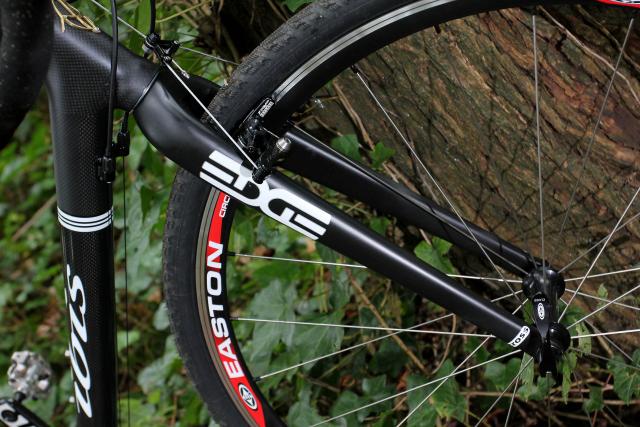
The forks are highly regarded Enve component tines, although they're from an old batch and stickered Edge from before the company changed its name. No difference, they're still lovely forks. They're full carbon to help the bike keep the scales sighing yet stout enough to track happily even over the pointiest of trail clutter. Despite the lack of a cable-hanger, they're pleasantly devoid of any fork flutter. Top marks there.
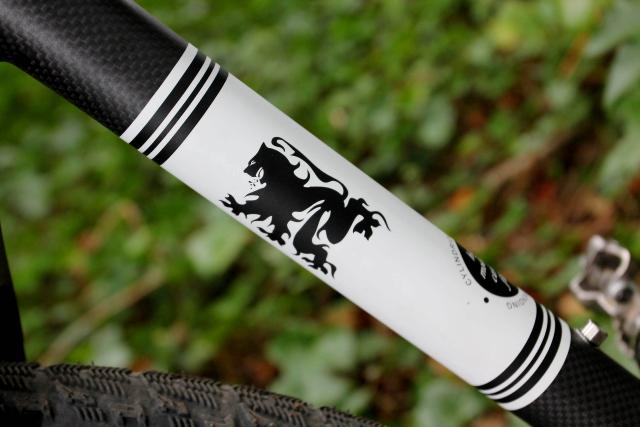
The Hakkalügi comes in either Black Lung or Phlegmish Yellow frame colour schemes. What you choose depends on whether you're a rider who likes their legs to do the talking or if you want to shout your our brand of faux-Belgian heritage. To help with that, the Flanders Lion graphic on the seat-tube is spitting not the usual flames but spurting phlegm. The finish on the test Black Lung is a stealthy naked carbon which shows off the craftsmanship in the frame beautifully with the down and seat tubes graphics applied as shiny wraps, The chainstays and seatstays have a similar wrap as protection against heel rub and chainslap.
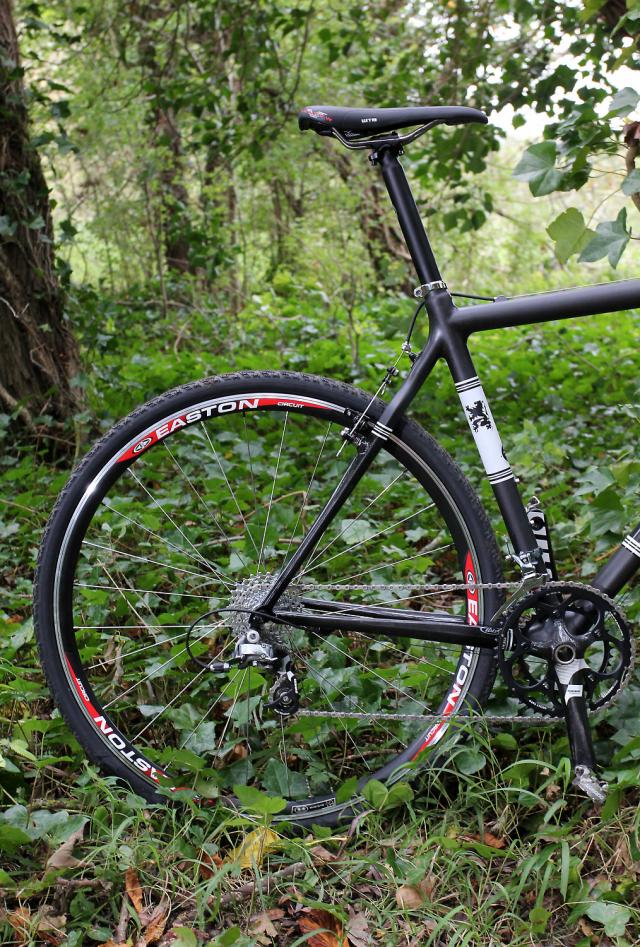
The Hakkalügi is put together in modular monocoque fashion using T700 carbon-fibre rather than the T800 which Ibis use for their Silk road bike. The T700 gives better impact resistance at the expense of stiffness – a good compromise for off-road protection and comfort. Ibis should know what they're doing because they were messing with carbon frames back in 1988, when most other carbon players where still in nappies.
Geometry numbers are well within the race-tapes leading to no surprises in the saddle. The only stand-out number is the bottom bracket drop which varies according to size. The 62 drop (giving a 292mm or 11.5in-ish bottom-bracket height) on the 550mm model tested is lower than some but it felt spot on, keeping the bike stable off road without any pedal strikes.
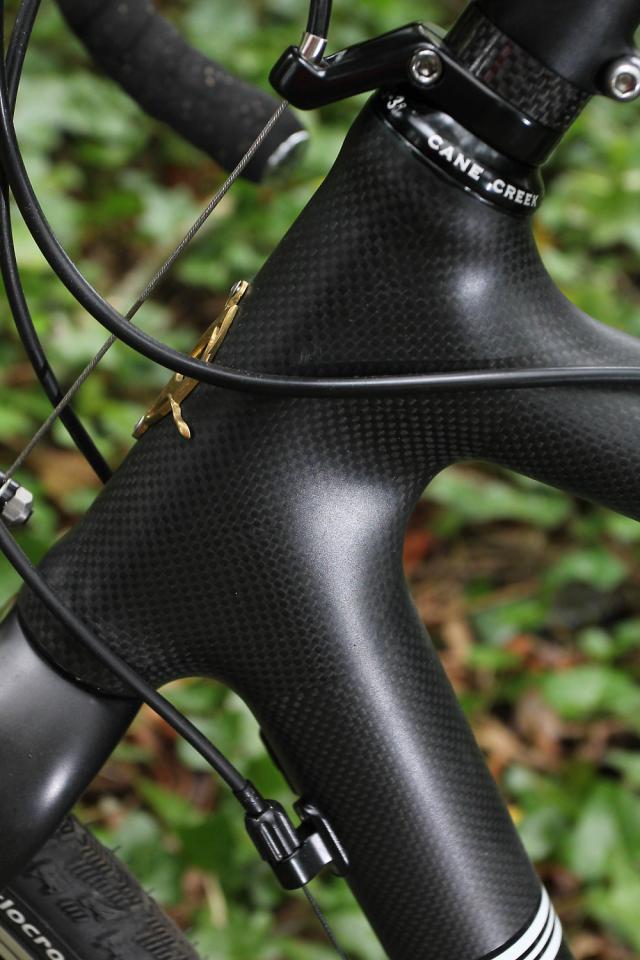
The Hakkalügi frame is free of immediately obvious bells and whistles, looking old – or classic, if you prefer – with its not-fantastically-oversized round tubes devoid of any weird moulded shapes. The head tube is a standard 1 1/8in, the bottom bracket isn't dramatically oversized and the top tube slights only slightly. The fat main tubes are offset by the slim seatstays and chainstays that display an elegantly curve to them.
The seatstays top out in a chunky yolk where the canti-hanger sits and the chainstays flow into a big-boned bottom bracket area that eschews the whole internal BB thing for a standard English threaded bottom bracket shell. The rear is perforated for the front gear-cable one end and finished off in compression molded carbon dropouts at the other, with a replaceable derailleur hanger.

Mud clearance is plentiful round the bottom-bracket and seatstays although the rear-facing seat-clamp slot is in the direct line of mucky fire. Look closer and the Ibis frame reveals little gems of frame jewellery. The elegant seat-collar and subtle bronze Ibis head-badge are overshadowed by the riveted HandJob. Easy madam, the Handjob is Ibis's trademark rear-brake hanger. It appeared on their mountain bikes back in the days of cantilevers and V-brakes and the tradition is proudly carried on the seatstay yolk here. It never fails to raise a smile.

The Hakkalügi is designed pretty much as a race-only machine with no mudguard or rack mounts (would you commute on this machine, really?). The only concessions to the fact that not everyone wants to ride around in painful circles for an hour and that some riders might want to play out for a bit longer are the twin bottle mounts.
Under the bottom bracket cable routing on a CX bike has never been the hand-wringing problem some fret it is, and there are the benefits of shorter cable-runs, less top-tube clutter and no water drip-drip-feeding into the top of a seatstay mounted derailleur cable. Cable adjusters on the down tube stops allow you to tweak gears on the move should you need to but sadly the brakes have no cable adjustment. Popping some in-line adjusters somewhere in both brake lines would have been useful; it's a shame they're missing on such a dandy build. The rear-brake cable runs along the left-hand side of the top-tube which could get snaggy and the gear cables sit quite proud from the down tube which might be an issue if you grab there when race shouldering.
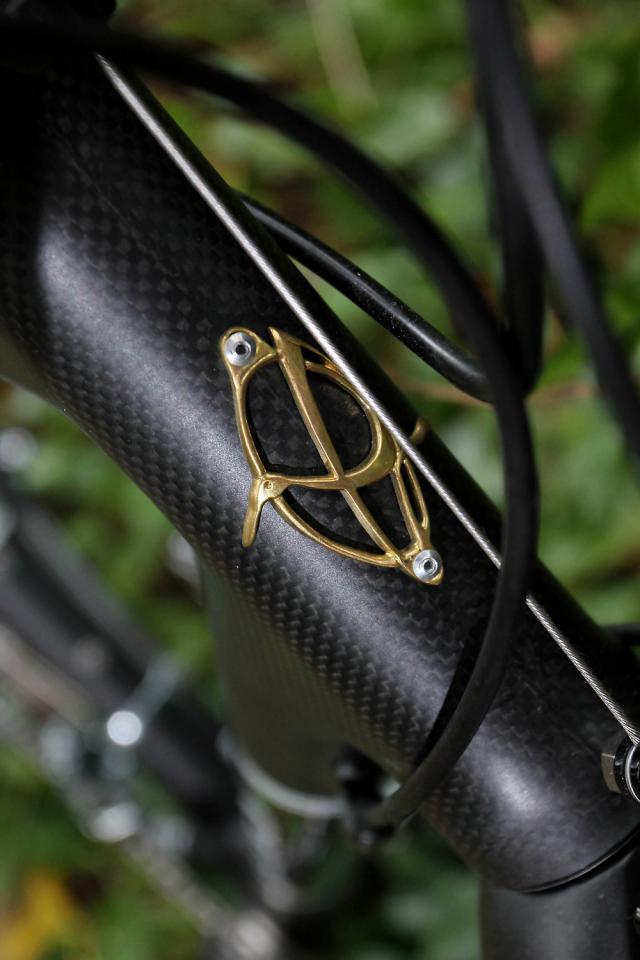
So how does this all add up? The feel of the Hakkalügi is best described as soft. Whether that's a good thing or bad thing depends on your style of riding. If you want a bike that jumps with you when you go for the sprint at the end of an hour then this isn't the bike for you. It's certainly light and it certainly moves swiftly enough but it doesn't have that sudden pounce when you punch the pedals. If you like to unravel the welds or rip the weave apart on a bike and like it to return for more, or if you are a beefy, chunky cyclist that mindlessly mashes the pedals then you'd best look elsewhere.
But if you're the kind of rider that likes to wiggle in snake-hipped sinuous synergy with the bike then you've found the perfect partner because there's more to a bike than just how stiff it is and how instantly it deals with your awesome crushing power.
Soft doesn't have to be a bad thing, it can be a benefit, especially for a bike that wants to be ridden off-road. Soft doesn't have to mean noodly either. Despite its light weight and lack of oversize this and stout that, the Hakkalügi doesn't get bounced off line when the trail gets jittery. It's not as 'point-and-shoot' as stiffer and sturdier frames, yet it's certainly not like piloting something al-dente every time you hit a bump.
Thanks to the deliberate absorbency of the frame, the Hakkalügi soaks up all that's underneath it and rides straight and true rather than like either a drunken Bambi or a plank of wood. The great advantage of the Ibis's plushness is that you can consider the otherwise iffy line over any bumpy, rooty stuff with either an aggressive or giggly attitude, depending on whether that's in a race situation or you're just mucking about on the hills.
The designed-in compliance of the carbon doesn't just take the edge off ruts and roots, it smoothes them off with a plane and then rubs them down with three grades of sandpaper. It really is that comfortable. Another upside to the overall cushiness of the Hakkalügi is that you're not going to get beaten up over the course of a race or a longer ride so you'll be that little bit fresher to react to whatever comes your way - be that a surprise attack up the inside line or an unexpected rut at the end of a big-mile bumpy day.
Combine that willowy feel with its light weight and the Hakkalügi definitely rewards a rider that likes to work with their bike to make it sing, repaying a style that knows when to go light and when to power through. Learn to live with the less than immediate response to a pedal kick and use the suppleness of the frame to attack on the crappy line. Play with the lack of weight as you effortlessly flick the bike onto your shoulder and you'll get on fine with the Hakkalügi. There's a lot to like for riders that can.
Verdict
With tapered head tubes and oversized bottom brackets and tube profiling making for more direct frames, and the disc option becoming increasingly workable and attractive, is the Hakkalügi the last of a breed and going to become a dinosaur in the next couple of years?
I hope not because it's a lovely bike. Sidestepping the 'Stiff Is King' ethos that seems to be the Holy Grail of cycling, the Ibis is a wonderfully forgiving frame that makes riding off-road – be that race or just-riding-along – a real sensual joy. Its light weight and soft character will frustrate big and powerful riders that want a stiff platform to feel they're performing at their best, but other riders that can glissade and jeté in the ballet of finesse will find a beautifully willing partner in the Hakkalügi.
road.cc test report
Make and model: Ibis Hakkalugi
Size tested: 55cm
About the bike
State the frame and fork material and method of construction. List the components used to build up the bike.
Modular monocoque T700 carbon-fibre
Fork – Enve RFC-47 Cyclocross
Wheels – Easton Circuit
Tyres – Michelin Jet TS
Brakes - TRP Euro X
Cranks – SRAM Force, 48/34 chainrings.
Rear Derailleur - SRAM Force
Front Derailleur - SRAM Force
Shift Levers - SRAM Force
Cassette – SRAM PG 1070, 12-28T
Headset – Cane Creek IS3i
Handlebar – Ibis Flat Top OS
Stem – Ibis OS
Seatpost – Ibis, 31.6mm
Saddle – WTB Rocket V
Tell us what the bike is for, and who it's aimed at. What do the manufacturers say about it? How does that compare to your own feelings about the bike?
Ibis have this to say about their bike: "After too long away from the muddy racecourses, the Ibis Hakkalügi has returned in all of its throat-clearing phlegmatic glory. This time around a huge chunk of weight has been removed by making the frame out of carbon fiber. Combine the lightweight frame with Ibis' classic cross geometry and you are definitely onto a winner. With features such as compression molded carbon dropouts, a carbon fiber seat tube insert and carbon head cups adding strength while dropping weight the 'Lügi is ready for anything you throw at it."
A friend has an old steel Hakkalügi that I covet muchly. I'm still waiting for him to decide he doesn't need it any more, or die, so I can make a move on it. Anyway, the carbon version is indeed lighter but still retains that classic cross look with chunky but not fantastically oversized tubes and good old-fashioned cantis for that racer look.
Frame and fork
Overall rating for frame and fork
8/10
Tell us about the build quality and finish of the frame and fork?
Thanks to the naked finish of the Black Lung colour choice it was easy to see the quality of the frame's construction rather than any imperfections being conveniently hidden behind a thick layer of pretty paint. It's really very well done indeed with lovely smooth joins between all the tubes.
Tell us about the materials used in the frame and fork?
T700 carbon-fibre chosen for its impact resistance rather than stiffness.
Tell us about the geometry of the frame and fork?
With seat-tube angle of 72° and head angle of 71.5° for the 550 size, with a 559 cm top tube and bottom bracket drop of 62, all the figures added up nicely with the lower BB making the Ibis pleasantly stable.
How was the bike in terms of height and reach? How did it compare to other bikes of the same stated size?
The Hakkalügi felt fine in comparison to other bikes of this size, not to high, long or squat, get on, pedal, everything in the right place. No complaints.
Riding the bike
Was the bike comfortable to ride? Tell us how you felt about the ride quality.
Yes, extremely comfortable, soaking up all sorts of trail detritus beautifully, something that could be used very much to either a racer's or rider's advantage.
Did the bike feel stiff in the right places? Did any part of the bike feel too stiff or too flexible?
The front of the bike was certainly stiff enough not to get pushed about off road but the rear was flexible in that nice way that we call compliance instead.
How did the bike transfer power? Did it feel efficient?
Power transfer certainly lagged behind the front of the bike, but sometimes that's not what it's all about.
Was there any toe-clip overlap with the front wheel? If so, was it a problem?
No.
How would you describe the steering? Was it lively, neutral or unresponsive? The cheerful side of neutral.
Tell us some more about the handling. How did the bike feel overall? Did it do particular things well or badly?
Handling was fine, and it threw in no surprises when bouncing around off road.
Which components had the most effect (good or bad) on the bike's comfort? would you recommend any changes?
No changes needed, the flat-top of the bars was welcomed and, thanks to the squish of the frame, even the slim saddle on top of an alloy 31.6mm seatpost didn't jack-hammer the jewels.
Which components had the most effect (good or bad) on the bike's stiffness? would you recommend any changes?
The carbon Enve CX fork complemented the frame's stiffness, or lack of it, perfectly.
Rate the bike for efficiency of power transfer:
4/10
Rate the bike for acceleration:
6/10
Rate the bike for sprinting:
5/10
Rate the bike for high speed stability:
7/10
Rate the bike for cruising speed stability:
8/10
Rate the bike for low speed stability:
8/10
Rate the bike for flat cornering:
7/10
Rate the bike for cornering on descents:
7/10
Rate the bike for climbing:
9/10
The drivetrain
Rate the drivetrain for performance:
6/10
Rate the drivetrain for durability:
7/10
Rate the drivetrain for weight:
7/10
Rate the drivetrain for value:
7/10
Tell us some more about the drivetrain. Anything you particularly did or didn't like? Any components which didn't work well together?
I'm not a SRAM fan, to be fair. I don't like the plastic feel. It sometimes requires more subtlety than you can muster under pressure to get slick front changes and that Double Tap can confuse a tired brain. I'd opt for the Shimano build myself.
Wheels and tyres
Rate the wheels and tyres for performance:
5/10
Rate the wheels and tyres for durability:
4/10
Rate the wheels and tyres for weight:
7/10
Rate the wheels and tyres for comfort:
8/10
Rate the wheels and tyres for value:
6/10
Tell us some more about the wheels and tyres.Did they work well in the conditions you encountered? Would you change the wheels or tyres? If so, what for?
The first thing to be done to the bike was to swap the tyres for something more suitable for an English cyclo cross environment, and I'm not sure I could trust those wheels for a season or extended playing off-road use.
Controls
Rate the controls for performance:
7/10
Rate the controls for durability:
6/10
Rate the controls for weight:
7/10
Rate the controls for comfort:
9/10
Rate the controls for value:
7/10
Your summary
Did you enjoy riding the bike? Yes.
Would you consider buying the bike? Yes.
Would you recommend the bike to a friend? Yes, but only the ones that ride with a little finesse.
Rate the bike overall for performance:
8/10
Rate the bike overall for value:
7/10
About the tester
Age: 42 Height: 180cm Weight: 73kg
I usually ride: It varies as to the season. My best bike is: The one I\'m on at the time
I've been riding for: Over 20 years I ride: Most days I would class myself as: Experienced
I regularly do the following types of riding: road racing, cyclo cross, general fitness riding, fixed/singlespeed, mtb, Fun
Jo Burt has spent the majority of his life riding bikes, drawing bikes and writing about bikes. When he's not scribbling pictures for the whole gamut of cycling media he writes words about them for road.cc and when he's not doing either of those he's pedaling. Then in whatever spare minutes there are in between he's agonizing over getting his socks, cycling cap and bar-tape to coordinate just so. And is quietly disappointed that yours don't He rides and races road bikes a bit, cyclo-cross bikes a lot and mountainbikes a fair bit too. Would rather be up a mountain.
Latest Comments
- eburtthebike 1 sec ago
I'm sure all the detractors of Cycling Mikey and others who report phone driving will now STFU. Surely the ban should have been longer? Much, much...
- David9694 6 min 46 sec ago
Cart & Horses: Another crash at notorious junction in Kings Worthy...
- webbierwrex 56 min 3 sec ago
As it said, each to their own. I've been very happy with my Zipp 303s which seems to be fast enough for me, have a life time guarantee and we're...
- dh700 4 hours 49 min ago
It's going to be a long, long time before the world starts running out of steel-framed bikes of any description. I pick up one or two a year for...
- Zebulebu 7 hours 24 min ago
You can't enter BC races because you don't have a BC license?...
- LookAhead 5 hours 23 min ago
I didn't take him to be calling this particular incident a mere encounter but rather to be using "encounters" to mean "opportunities for violent...
- chrisonabike 11 hours 50 min ago
Councils don't seem terrible keen ... maybe eburtthebike can give us the insider view in why not?...
- Hirsute 15 hours 8 min ago
Another pathetic sentence for killing a cyclist....
- HoarseMann 16 hours 26 min ago
...and maybe a third? Don't forget the M49 'ghost' junction: https://www.bristolpost.co.uk/news/bristol-news/work-m49-ghost-junction-...
- ubercurmudgeon 18 hours 52 min ago
What a shit world we've created.

























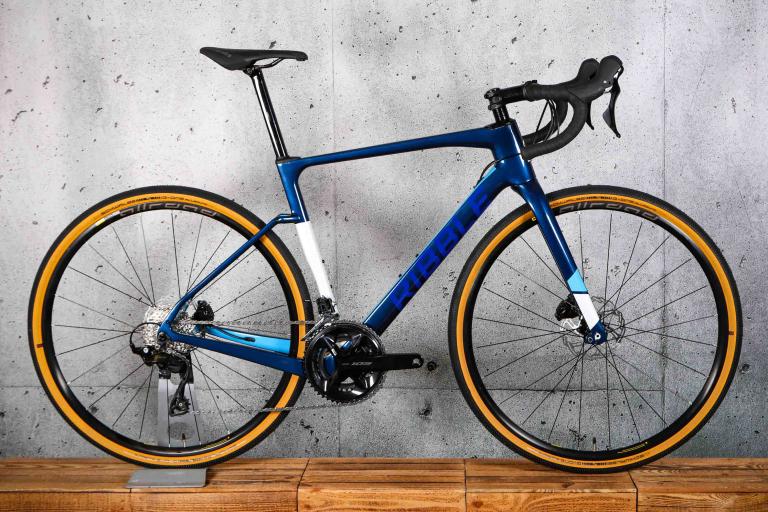
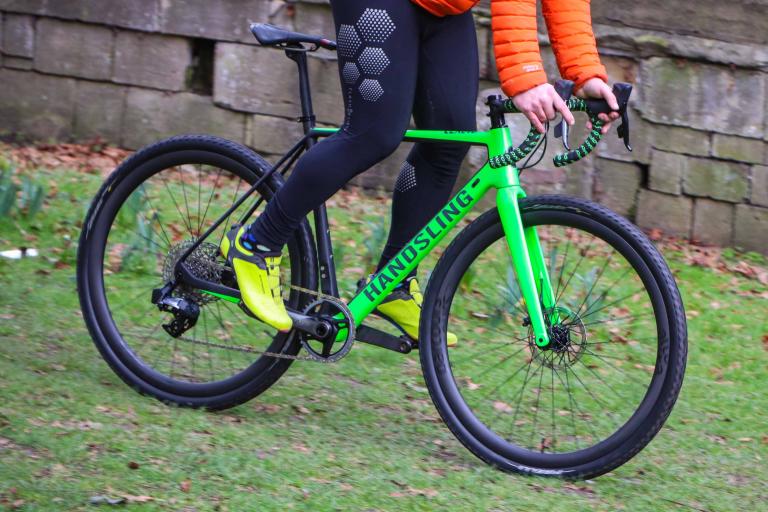

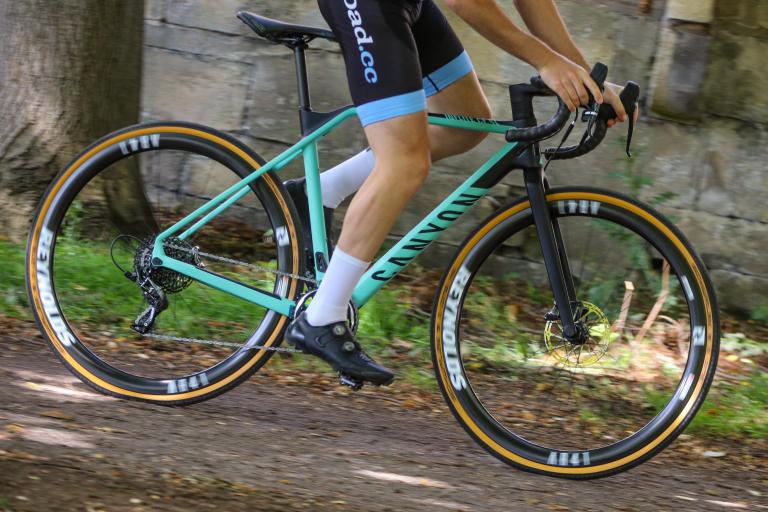
Add new comment
3 comments
Decals look nice. Frame looks warmly familiar... http://www.alibaba.com/products/cyclocross_carbon_frame/--122203.html
Not that it bothers me, but is the name "Hakkalügi" designed to evoke Eighties slang for coughing up phlegm?
Sounds nice, but I'd feel v.disappointed if I'd crocked the wheels that quickly on a £3K+ bike.
Definitely. Did you notice the available colorways?
"The Hakkalügi comes in either Black Lung or Phlegmish Yellow frame colour schemes. "